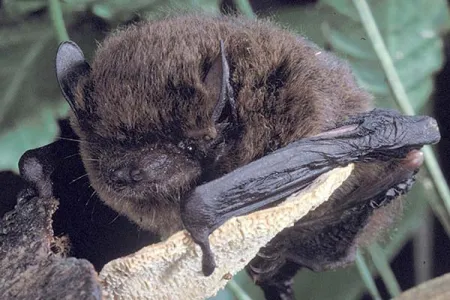CDU researcher’s book tracks path to extinction
A new book by a leading Charles Darwin University researcher about the recent extinction of an Australian bat highlights the need to more carefully manage environments.
A Bat’s End: The Christmas Island Pipistrelle and Extinction in Australia by Professor John Woinarski from CDU’s Research Institute of Environment and Livelihoods chronicles the ecological, policy and management factors that caused the loss of this species.
Professor Woinarski said he hoped the book would serve as an obituary and an inquest.
“The book is a mark of respect because the extinction of any species should not go unrecognised. But beyond that, it is a plea to manage our environments with more care, responsibility and consideration of the legacy we should leave to following generations,” he said.
“In the eyes of many, the Christmas Island pipistrelle might seem unremarkable. It looked much like many other small Australian bats.
“However, the manner of its loss is a cautionary tale because many of the same policy, legal and funding shortcomings that failed to prevent this extinction still exist and will also compromise the recovery of many other threatened species across our country.”
The book articulates that human settlement on Christmas Island was fundamental to the species’ decline.
“Christmas Island is a 21st century extinction hotspot, a special place now irrevocably changed by human settlement,” Professor Woinarski said.
“Mining and the introduction of invasive species have changed the ecology of Christmas Island forever,” he said.
Unlike the demise of many species, scientists can identify the precise moment the pipistrelle disappeared from the planet.
On 26 August 2009, the last bat emerged from its shelter. It flew along its regular foraging beat for several hours, detected by a group of scientists desperate to conserve the species. The bat was not recorded again that night. It was not recorded the next night. The bat was never recorded again.
Professor Woinarski said it was harrowing to be witness to the end of a species.
“Perhaps the real tragedy of the Christmas Island Pipistrelle was that its decline was preventable,” he said.
“Population monitoring gave ample warning that it would become extinct unless effective management was implemented.
“The book gives voice to the pipistrelle’s champions – individuals who believed that it could be saved and showed extraordinary commitment to attempting to conserve it.
“The book also gives the perspectives of those politicians, public servants and managers who were responsible for its conservation, but failed in that duty.
“This might be the story about one extinct species, but it’s also an attempt to draw lessons that may reduce the likelihood of such an extinction recurring again,” Professor Woinarski said.
For further information on A Bat’s End: The Christmas Island Pipistrelle and Extinction in Australia visit W: publish.csiro.au/book/7791
